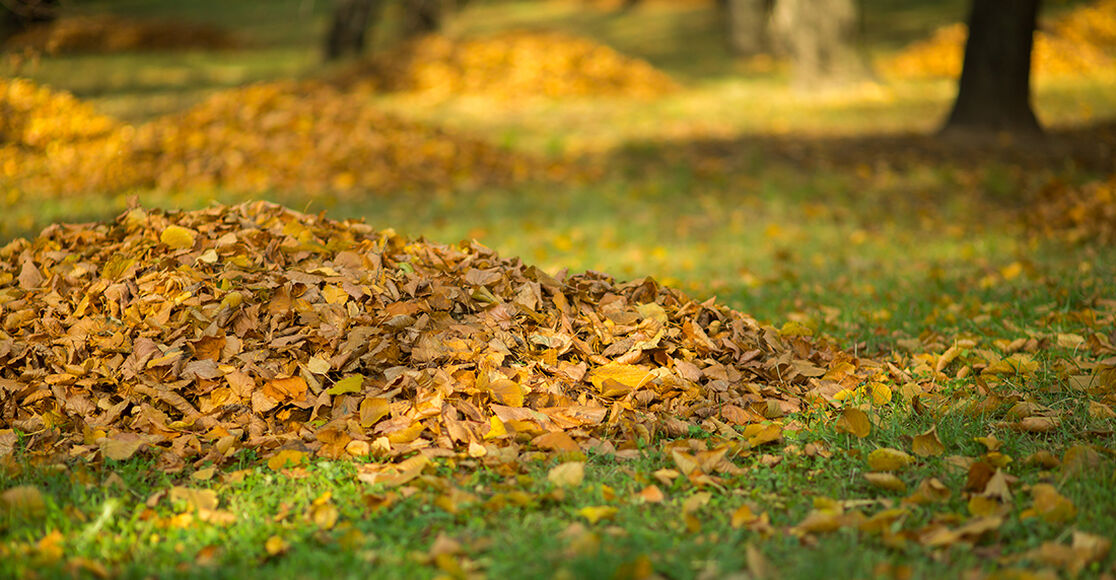Fallen leaves may be beautiful this time of year, but they’re not so great when it comes to the health of your lawn. Knowing how to pick up and clean up those fall leaves can be crucial to ensure your lawn looks its best come springtime.
Not to worry; we have tips and ideas you can use to help make your fall leaf cleanup and removal efforts around the yard a little easier. Here are some of our top recommendations for cleaning up leaves from your yard:
- Tackle leaves regularly. Routine cleanups not only make the process more manageable, they can also promote a healthier lawn. Leaving whole leaves on the lawn during the fall and winter months can encourage the growth of funguses or mold and prevent the right balance of air and sunlight from reaching grass. Throughout the fall, your yard needs to breathe to receive the nutrients and sunlight it needs to thrive come springtime. So, blowing, raking or vacuuming helps for a healthy lawn and can make spring lawn care easy. Try to remove leaves every other week to help maintain a healthy lawn. You can use collected leaves to create a DIY mulch that can be spread on top of garden beds, serving as a form of insulation prior to winter. Or compost autumn leaves and grass clippings along with compostable kitchen scraps and other materials to create a nutrient-rich additive for garden and flower beds.
- Use your mower in between cleanups. If leaf fall is light, then you may be able to use your mulching lawn mower to mulch them. To do this process, simply mow over the fallen leaves a few times, then collect or suck up the mulched leaves with a leaf blower/vacuum. It’s important that leaves are chopped up before using them as mulch. The chopped or mulched leaves can be spread over beds where they’ll break down over time. Keep in mind, mulching with a mower should be done often and at slow speeds. Also, this process may not be an appropriate cleanup method if your lawn is heavily covered in leaves.
- Optimize your cleanup tools. When it comes to leaf blowers, consider the various leaf blower features that will give you the most mileage for cleanup. As a rule of thumb, small- to medium-sized yards typically call for handheld leaf blowers. Larger yards tend to call for backpack blowers because they’re built to produce greater power vs a handheld model for heavy duty cleanup jobs. Or use a chipper shredder vacuum, such as the CSV060B Chipper Shredder Vacuum, to vacuum and shred leaves and other small debris into a bag, providing an all-in-one approach to leaf removal. Functioning much like a walk-behind mower, the vacuum simply sucks up leaves and deposits them in a bag as it’s pushed across your lawn. If your landscape consists of bushes and hard-to-reach places, then a hose attachment can easily clean around those areas; for yards that need small fallen branches removed, a dedicated chipping chute can quickly break down branches up to 1.5 inches in diameter. You may also be able to use the broken-down material as mulch or in compost.
- Strategize pile placement. To clear leaves efficiently from your yard, place a tarp over a designated area on your lawn. Blow the leaves into a pile on the tarp, gather up the corners, and leave the bundle out by the curb for pickup according to your city’s green waste rules, or move to a compost pile or vegetable garden if you’re looking for an eco-friendlier option. Using a tarp is much more efficient – and less frustrating – than trying to blow or rake leaves down to the curb.
- Extend your reach. Use a leaf blower with extension tubes or an extension kit so you can extend the blower’s reach to remove leaves from hard-to-access areas and gutters. Be sure to wear goggles because debris can fall from above. One option may be the TB430 Leaf Blower, which comes with extended tubes and a built-in leaf scraper and concentrator nozzle.
